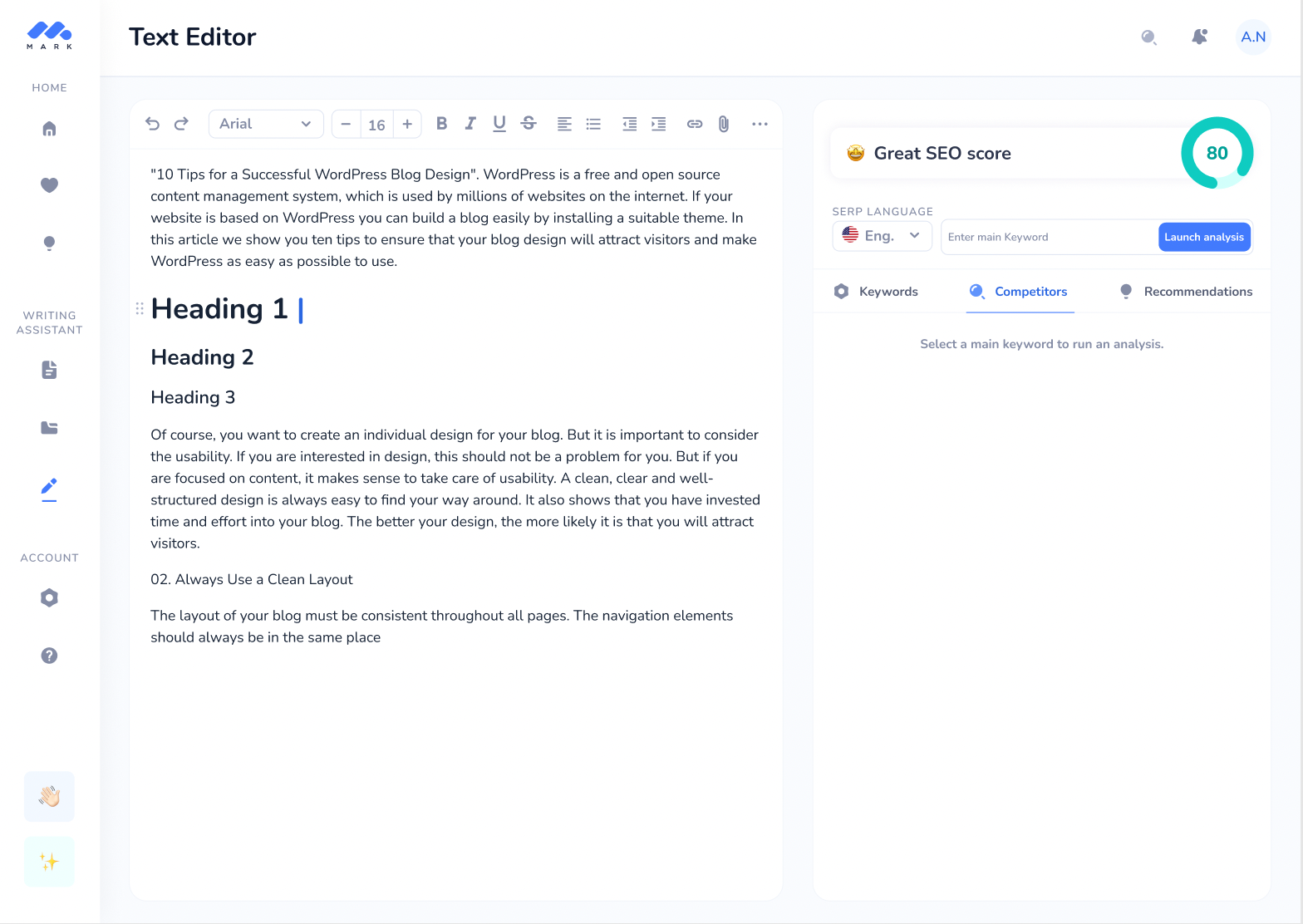Creating content is one thing, but having it rank is an entirely different beast.
With constant changes to Google algorithms, SEO tactics, and competitors with seemingly the same idea; it’s harder than ever to rank your content at the top of Mt Google.
With this challenge in mind – we re-created our entire SEO section to provide more insights on how likely a piece of content is to rank.
Our updates include competitor analysis, keyword analysis, and recommendations on how to outrank your competition. Taking the guesswork out of staying ahead of the competition – maximizing your ranking on search engine results pages (SERP’s).
In this article, we’ll show you step by step how to climb the SERP’s and become more visible online in no time!
Step 1: Enter your main keyword
After creating your article with Mark (either with Rocket Mode or the full blog post template) you’ll end up on our Text Editor section.
To enter your main keywords:
- Click on the SEO tab (right hand side)
- Insert your main keyword
- To start, click Launch Analysis

Step 2: Let the SEO analysis begin!
When entering your main keywords, Mark analyzes the results of the top results on Google (up to 10) that rank for that keyword. Based on this, Mark will start suggesting complimentary
to include, allowing search engine algorithms to rank your content more accurately – skyrocketing your content up the SERP (search engine results page) rankings! The more
your main keyword is, the more specific the semantic keywords will be.Meta title and Meta description suggestions will also be automatically generated, based on main and complimentary keywords.

Step 3: Optimize the quality of your article
Here come the recommendations! Based on the competitor analysis, Mark will make suggestions around all kinds of things:
- Number of words
- Number of H2 tags
- Number of H3 tags
- Number of images
- Article contains an H1 title
- H1 title is close to the recommended length
- Main (and closely related to main) keywords are included
- Semantic keywords are included

Step 4. Check out what the competition is doing
For each result, you’ll get details on what your top competitors are doing – including:
- The number of words (including H2 and H3 titles) in their content
- Images included
- Links (both internal and external)
- As well as the average of the top 10
Armed with this information, you can now easily analyze (and outrank) the competition

Step 5: Check your SEO score
Keep an eye on the SEO score in the top right hand corner – the closer we get to 100, the more likely your content is to rank! For reference, above 80 is a great score 🚀 Bonus: very soon you’ll be able to publish your SEO optimized content directly from Mark Copy to WordPress

Now we’re ready to analyze the competition and optimize the quality of your article content, climbing search engine results pages (SERP’s) in no time!Keep an eye on Mark’s SEO score to track your progress and make sure your content is optimized as you go 😍Happy writing 🤖

0 comments